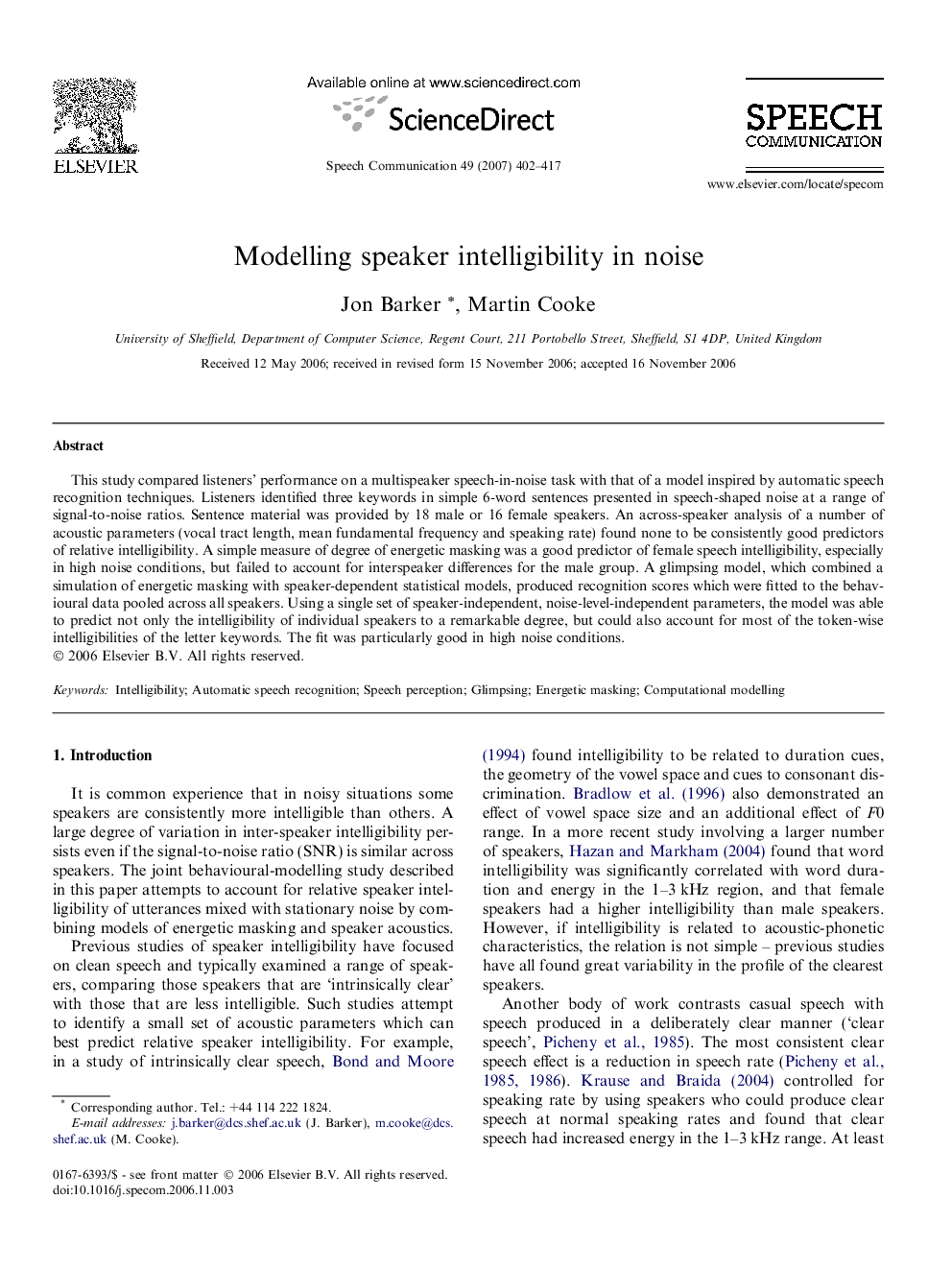| Article ID | Journal | Published Year | Pages | File Type |
|---|---|---|---|---|
| 568941 | Speech Communication | 2007 | 16 Pages |
This study compared listeners’ performance on a multispeaker speech-in-noise task with that of a model inspired by automatic speech recognition techniques. Listeners identified three keywords in simple 6-word sentences presented in speech-shaped noise at a range of signal-to-noise ratios. Sentence material was provided by 18 male or 16 female speakers. An across-speaker analysis of a number of acoustic parameters (vocal tract length, mean fundamental frequency and speaking rate) found none to be consistently good predictors of relative intelligibility. A simple measure of degree of energetic masking was a good predictor of female speech intelligibility, especially in high noise conditions, but failed to account for interspeaker differences for the male group. A glimpsing model, which combined a simulation of energetic masking with speaker-dependent statistical models, produced recognition scores which were fitted to the behavioural data pooled across all speakers. Using a single set of speaker-independent, noise-level-independent parameters, the model was able to predict not only the intelligibility of individual speakers to a remarkable degree, but could also account for most of the token-wise intelligibilities of the letter keywords. The fit was particularly good in high noise conditions.
